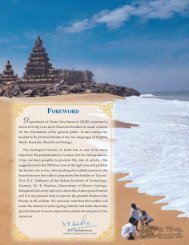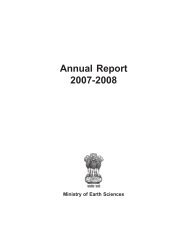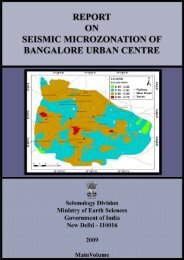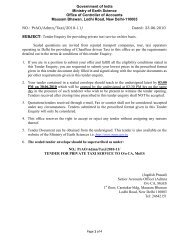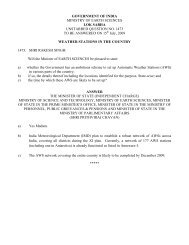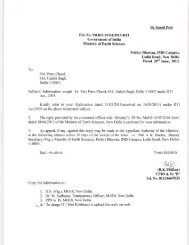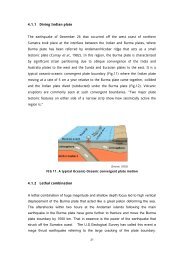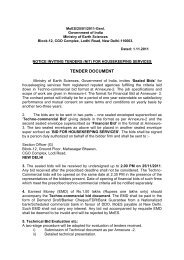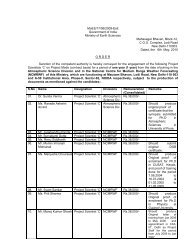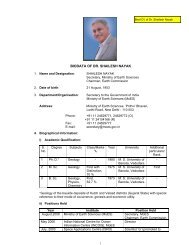Annual Report 2009-2010 - Ministry Of Earth Sciences
Annual Report 2009-2010 - Ministry Of Earth Sciences
Annual Report 2009-2010 - Ministry Of Earth Sciences
Create successful ePaper yourself
Turn your PDF publications into a flip-book with our unique Google optimized e-Paper software.
Fig. 7.5: Theoretical model to explain the open ocean blooms<br />
7.5 Ecosystem Modelling<br />
7.5.1 Ecosystem Modelling for Chilika Lake<br />
The Chilika Lake productivity is governed by<br />
catchment modifications together with the<br />
opening of new mouths. In order to understand the<br />
hydrodynamics and biogeochemical changes that<br />
are prevalent in the ecosystem and the resultant<br />
changes on productivity, the present project has<br />
been taken up. The major aim of the project is to<br />
develop an ecosystem model in stages to predict<br />
primary, secondary and tertiary production and<br />
changing environmental conditions.<br />
a) Hydrodynamics modelling<br />
A 2-dimensional depth integrated MIKE 21<br />
hydrodynamic flow model was used to simulate<br />
the water levels and flow field in the Chilka<br />
Lake. The field data collected at five stations<br />
simultaneously over a period of 30 days under<br />
NE monsoon conditions was used for calibrating<br />
and validating the model results. Based on HD<br />
model results the tidal propagation into the lake<br />
was studied. The tide excursion into the lake<br />
underwent drastic spatial variations. Based on<br />
the simulated hourly data over a period of 48<br />
hours obtained from the model results, water and<br />
salt fluxes across the four sector regions (open<br />
channel, north sector, central sector and southern<br />
sector) were calculated. Results indicate that a<br />
net water flux of 413 cu.m/s and salt flux of 5797<br />
cu.m/s was noticed in the central sector which<br />
indicates that the central sector is favourable for<br />
biological production when compared with the<br />
other sectors. It is estimated that a quantum of<br />
2196 Million cu.m. is discharged into the lagoon<br />
from the gauged stream/ rivulets of the Western<br />
Catchment during <strong>2009</strong>-10.<br />
44 <strong>Ministry</strong> of <strong>Earth</strong> <strong>Sciences</strong> : <strong>Annual</strong> <strong>Report</strong> <strong>2009</strong>-10




